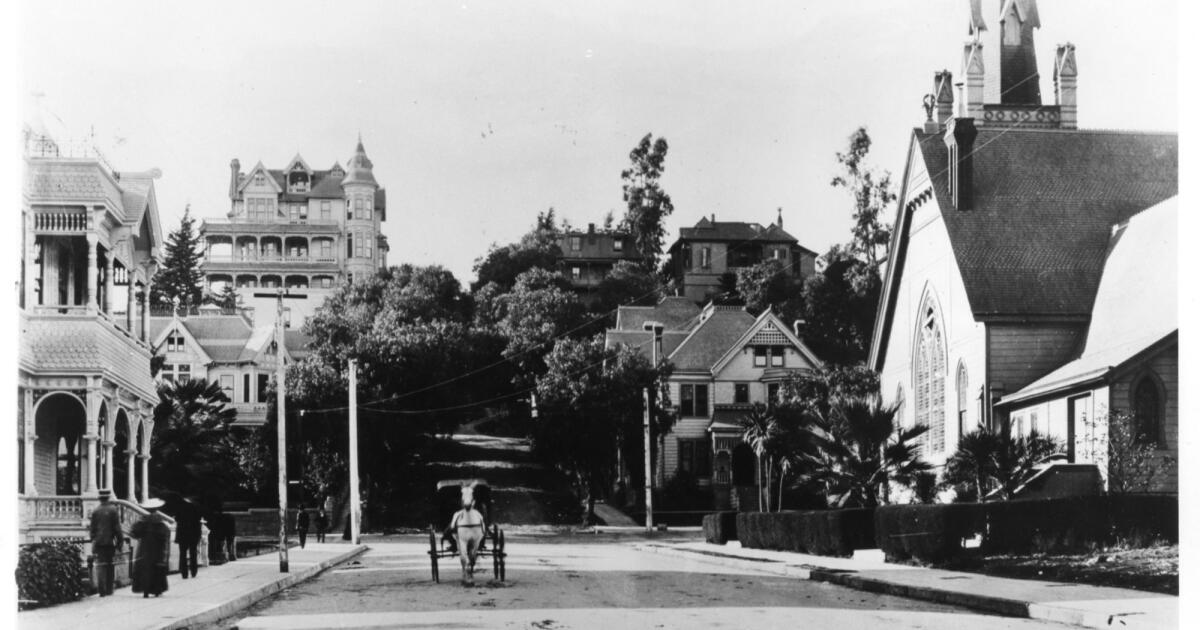
Bunker Hill once was a neighborhood. Then progress came to town
LA TimesHugh and Kim Grace stand atop a barren Bunker Hill in 1973 and pretend to touch the top of City Hall in the distance. The Music Center, which opened in stages, starting in 1964 — around the same time the city was bulldozing the last boarding houses that sheltered elderly and immigrants — has been described as the project that “commenced the revitalization of Bunker Hill.” When Frank Gehry’s Walt Disney Concert Hall opened on Grand Avenue in 2003, it was described as “the centerpiece of revitalization.” Developer Eli Broad once described his ambitions to transform Grand Avenue into “the Champs-Elysées of Los Angeles” — “which may have been an exaggeration,” he later said. From the Archives: The Castle on Bunker Hill » Now as construction begins on Gehry’s Grand Avenue project — the mixed-use retail and residential complex that will occupy the dour parking lot that has, for years, sat across from Disney Hall — there is renewed chatter about “revitalization.” But what does it mean to “revitalize” something that we had a hand in extinguishing? ALSO: Architect Frank Gehry unveils designs for long-delayed Grand Avenue project » Bunnie Burns, seated, is evicted by sheriff’s deputies from the condemned Northern Hotel on 2nd Street on Bunker Hill in 1969. As critical theorist Norman Klein notes in “The History of Forgetting: Los Angeles and the Erasure of Memory,” his 1997 book exploring the ways in which L.A. has continuously reinvented its landscape, “no ethnic community downtown was allowed to keep its original locations: Chinatown, the Mexican Sonora, Little Italy.” The path for Bunker Hill’s ultimate undoing was set with the 1949 federal Housing Act, which allowed for a looser use of eminent domain.
History of this topic

Timeline: How Bunker Hill transformed Los Angeles and Grand Avenue
LA TimesDiscover Related







